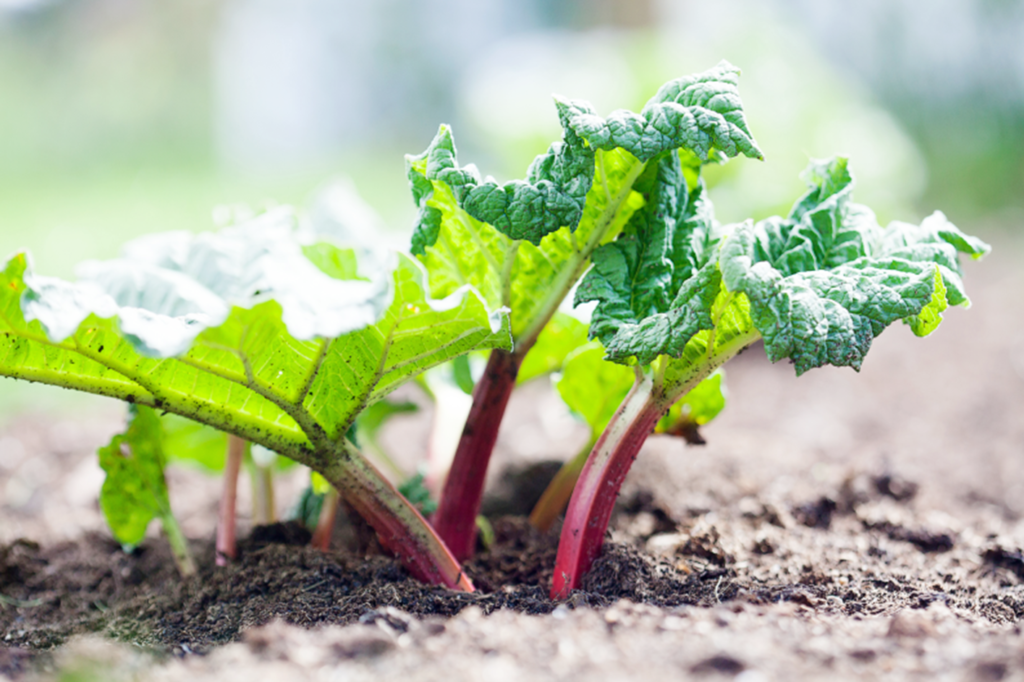By Rachael Leverton
Rhubarb is a reasonably easy trouble-free plant to grow. It is also a handsome plant, with large leaves and striking red stems, and who doesn’t love a rhubarb crumble?
The trick is to choose the right spot. Ideally it needs to be planted in full sun but if your garden is very sheltered it will tolerate partial shade. Don’t plant it anywhere where it might be in the way, disturbed, or need to be moved from. Rhubarb has an extensive root system and prefers to stay put, for at least a decade, so give careful thought to the spot.
Rhubarb dislikes wet soil, so make sure it’s well-drained. Dig in plenty of organic matter a month or so before planting. It’s generally easier and more productive to grow rhubarb from crowns (divided plants) rather than seed, and from now until Christmas is the perfect time to plant.
Dig a hole a little wider than the rhubarb crown in your prepared ground. Plant so that the growing tip is about an inch /2.5 cm be-low the surface. Firm the soil well around the roots to removed air pockets. Water well and mulch with organic matter, avoiding the growing tip.
During the growing season keep the area around the plant free of weeds and give an occasional good soaking in prolonged dry periods. Remove any flower heads that appear in the spring. Flowering will weaken the stems. If the crown rots, your soil was too wet, but following all the advice I’ve given earlier should prevent this happening! Harvest time is May until July, but rhubarb is a long-term investment so don’t harvest it during the first year. It needs that full first year of growth to establish a strong root system. Sec-ond year leave at least five strong stems when you harvest. After that you can leave three or four stems each time. You should get 2-3 crops per season.
Remove only the largest stems when picking and wait till the leaves have fully opened. Pull gently from the base with a slight twist. The leaves are poisonous but can be safely com-posted.
Once your rhubarb is established you might want to try a forced crop for sweeter more tender stems. Rhubarb is forced by growing it in the absence of light in a microclimate slightly warmer than the outside temperature. You can start forcing in January for best re-sults. Remove dead leaves and weeds from around the crown and add a layer of straw or shredded paper to warm the emerging shoots and to protect them from frost. Then cover the crown with an upturned dustbin or large crock pot to cut out all the light. The rhubarb should be ready for harvesting 8 weeks later.
Happy gardening.

